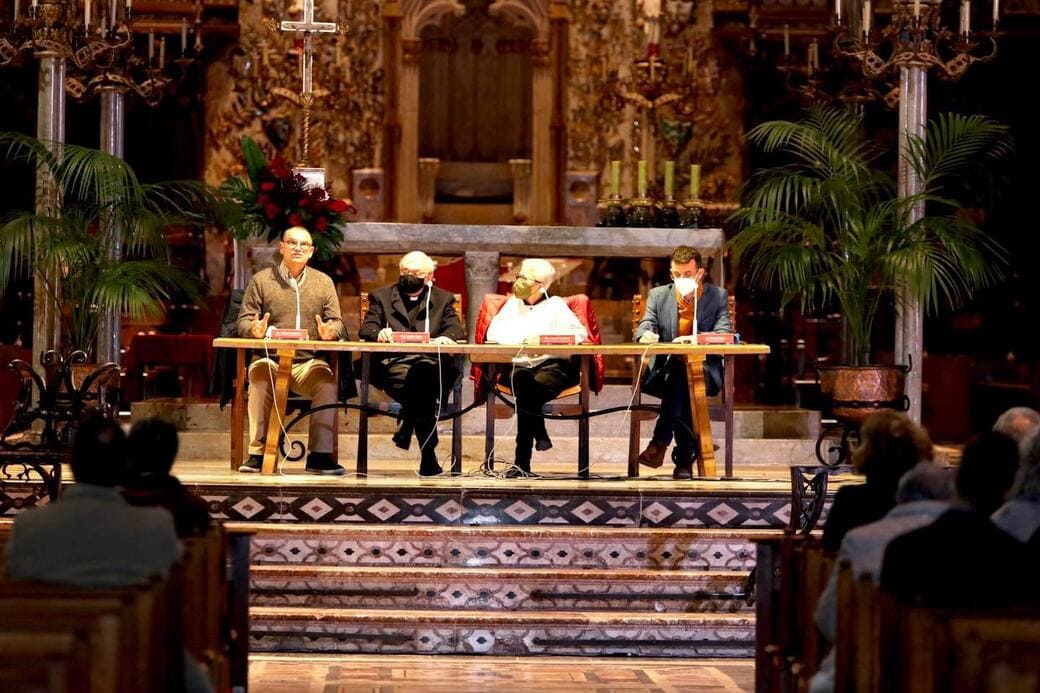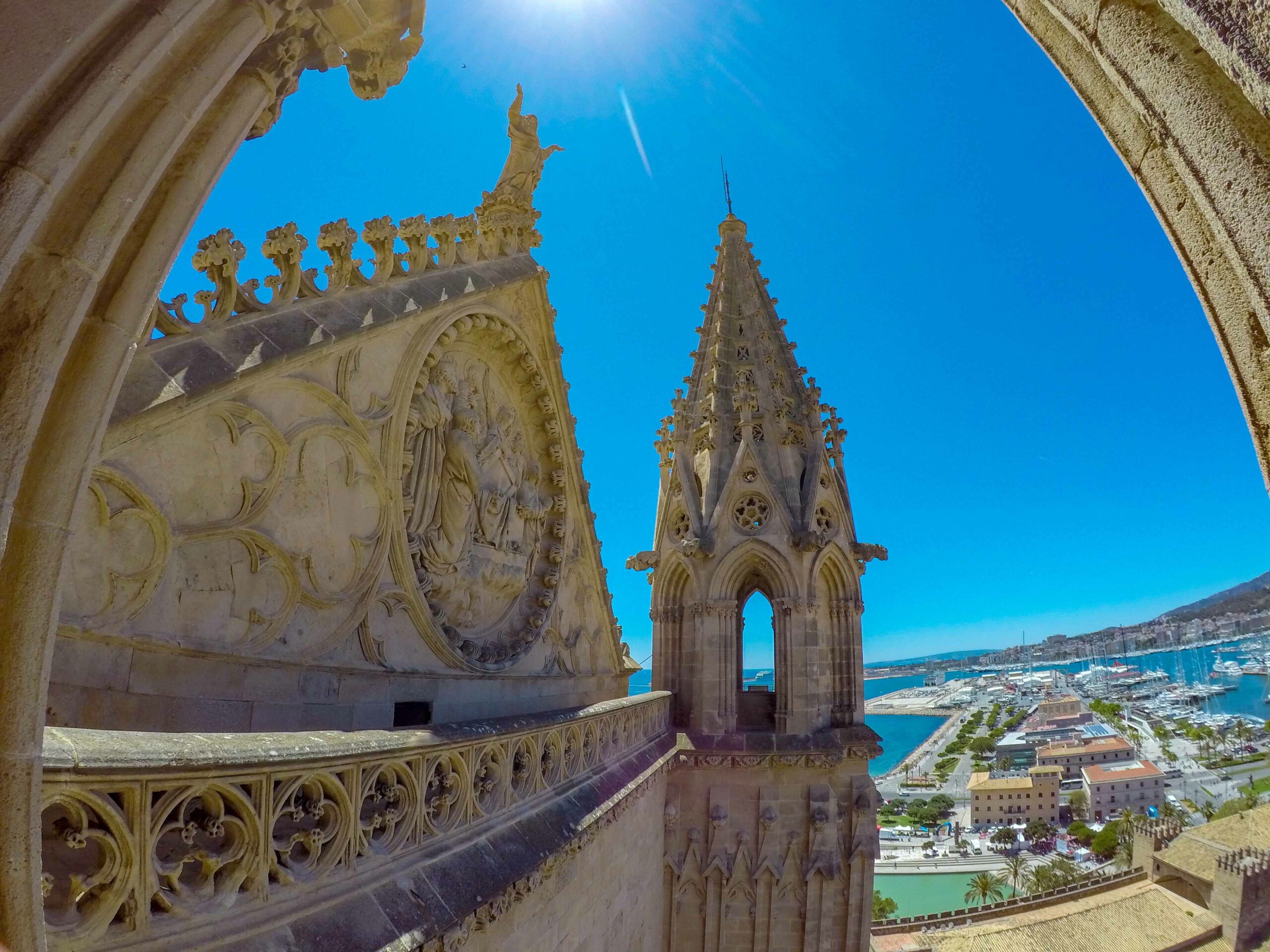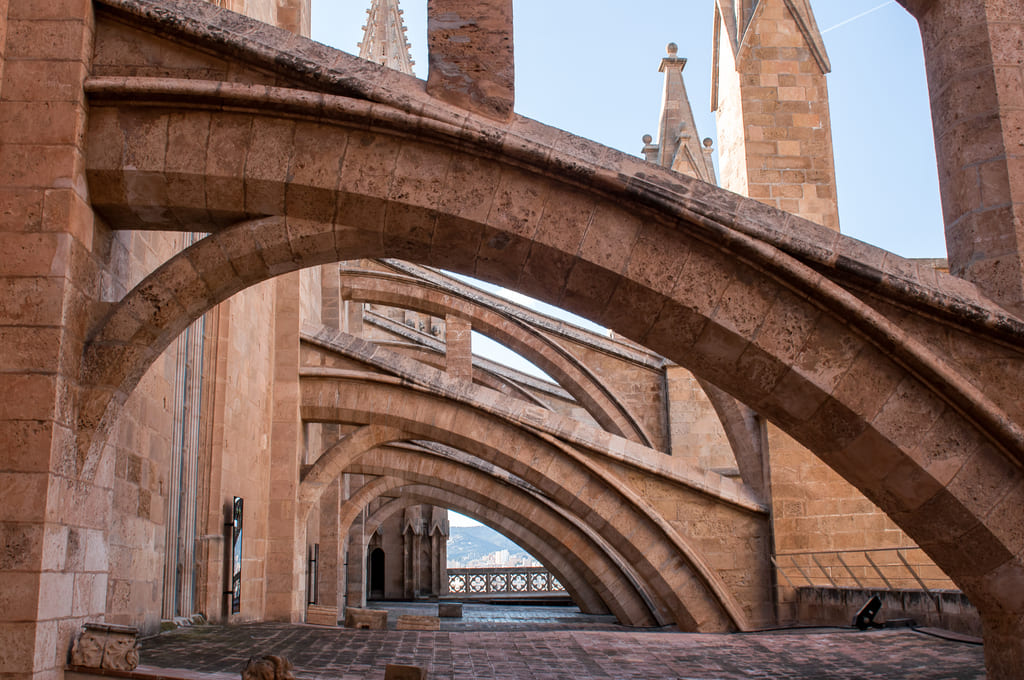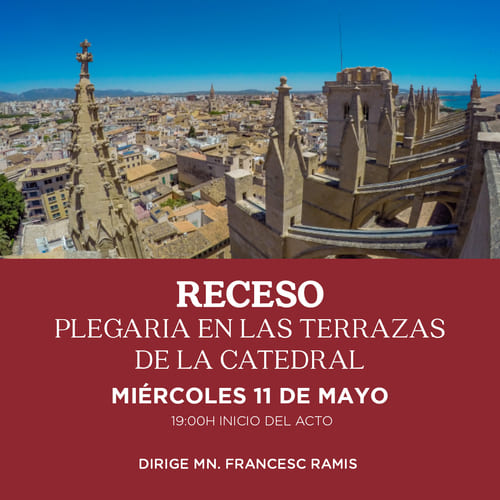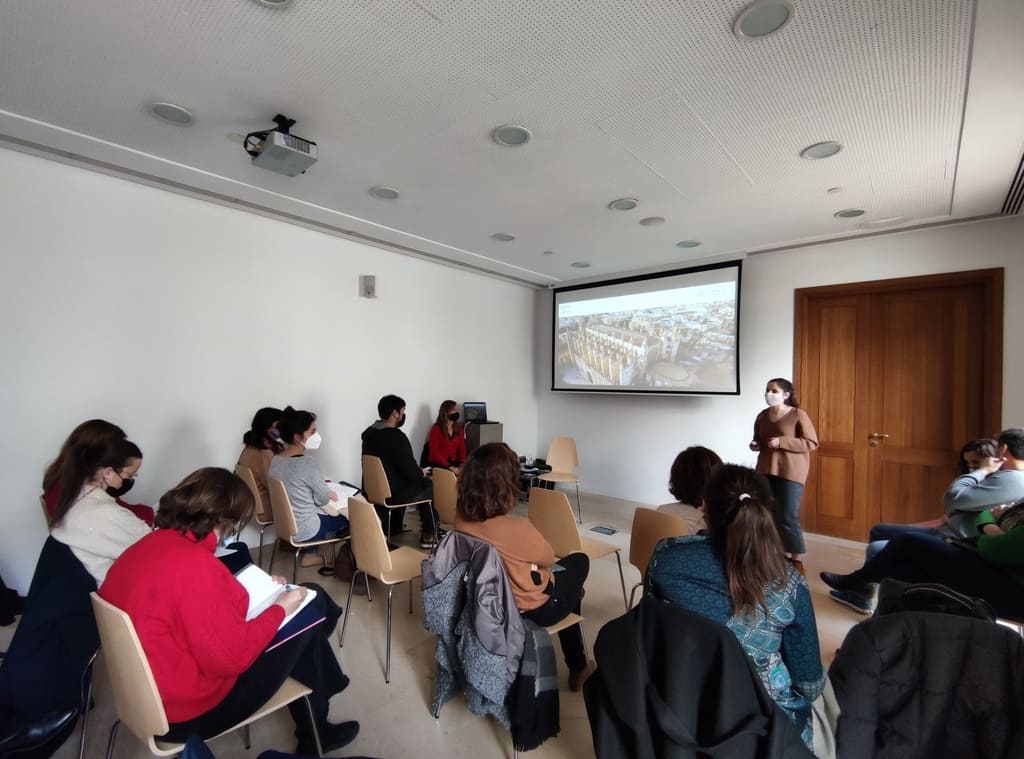Yesterday the Cathedral hosted a meeting between different specialists who cast light on one of the topics that is of most interest among the general public: the light effect of 2 February and 11 November. The round table, chaired by Dr Mercè Gambús, included experts in maths, architecture and liturgy, to consider the question of the phenomenon of the Festival of Light from different perspectives.
Dr Gambús, director of the Cathedral of Mallorca Chair, opened the event with a brief introduction to the history of the structure of the Cathedral, in particular noting the moment when the stained-glass windows were opened in the 19th and 20th centuries, which gave the Cathedral stable lighting conditions and allowed this famous phenomenon to be seen. From 2015, the Cathedral called it the “Spectacle of the Eight”, a name that aimed to attract the attention of the media for marketing purposes and linked it to a possible numeric symbolism. However, from 2018 the decision was taken to use a new name, “Festival of Light”, which is more in line with the religious and spiritual symbolism of the phenomenon.
The first speaker at the round table was Dr Daniel Ruiz who is a doctor of mathematics and president of the Balearic Mathematics Society. He said that the Cathedral is a tangible reflection of the mathematical trace left to us by architects and other artists: “It can be seen in each and every one of its corners, in the proportions of its columns, in the use of geometrical elements, in Gaudí’s reforms and in the decoration of the rose windows”. Pep Lluís Pol, who is also a mathematician, and Daniel Ruiz himself were actually the first people to explain the light phenomenon, from 2007. Ruiz gave a very enlightening explanation of how this effect occurs from a mathematical point of view, which comprises the tangency of two circumferences: on the one hand, the west rose window and, on the other, the projection of the main rose window.
For his part, Dr Miquel Ballester, who is a doctor of history of art and an architectural technician, emphasised architecture as playing a special role in the light phenomenon. During his presentation, the audience learnt that the light effect is the result of chance and is determined by structural factors that occurred over time. The initial plan for the Cathedral did not include construction of the main rose window. Instead, it was built as a consequence of the change of design of the Cathedral and the expansion of the building, both in width and height, and so it was used as a solution to reduce the weight of the wall of the central nave above the Royal Chapel. He also mentioned a subject that has, on occasion, caused various readings and interpretations: the design of the latticework of the main rose window. According to Ballester, the patterns and forms of the rose window are due to a structural question, as these geometric forms are the best for distributing weight. Ballester also stated that the current design of the rose window is possibly the same as the original one.
Monsignor Teodor Suau, who is dean-president of the Cathedral Chapter, a biblical scholar and an expert in liturgy, was the last to speak at the round table, giving a theological and liturgical perspective on the question. For Mgr Suau, the concept of light is connected to the archetypical longing of the human being and is, in fact, present in all religions and cultures, which identify God with light. To understand the meaning of light for humankind, Mgr Suau took an interesting journey through different cultures and religions, from ancient Greece to the Judaeo-Christian and biblical tradition. In this last tradition, light is what illuminates the path of people and light is identified with God, which is why light is so important in Gothic architecture.
More than 40 people attended the round table in person, while 300 followed the event live through the Cathedral’s YouTube and Facebook channels.

